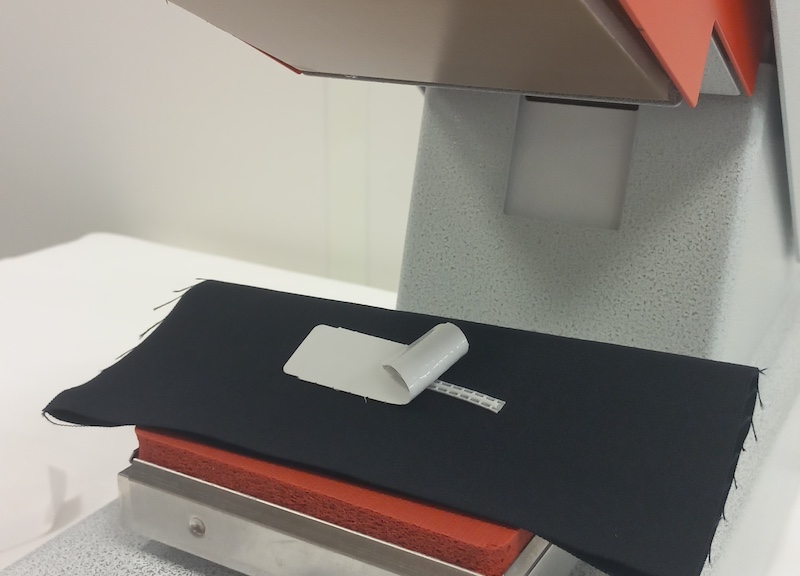- SNCF and Cepovett Group have launched a pilot to track about 40,000 uniforms for railroad employees with E-Thread RFID technology from Primo1D.
- The UHF RAIN RFID thread can be sewn or applied directly into fabrics and washed and worn without being detected or damaged.
Workwear manufacturing company Cepovett Group is deploying RFID-enabled uniforms that come with built-in RFID yarn from technology company Primo1D. They are providing the smart uniforms to French railroad company SNCF, serving about 40,000 employees.
Primo1D makes its E-Thread RFID yarn built to withstand the temperatures and mechanical stress found in laundering processes as well as the product’s lifecycle. Because the thread is sewn directly into the garment, it cannot be easily removed either deliberately or unintentionally.
Cepovett is a French, family-operation that specializes in uniforms and workwear: selling a total of 11 million garments yearly. SCNF is one of the company’s major customers. The railroad company and uniform manufacturer have been working together on a traceability solution to improve inventory management of SNCF’s uniforms. They wanted a solution to more automatically identify each item as it was worn, cleaned, stored, repaired, maintained or recycled.
The companies will test the technology through 2025 after which the rollout could include more than 70,000 carriers.
Collaborating Since 2022
Primo1D and Cepovett initiated discussions on this uniform project as part of an early partnership for SNCF’s workwear. This collaboration, started in 2022, aligns with Cepovett’s move toward enhanced traceability and identification and its associated new business models, said Valériane Henry, Primo1D’s business development manager.
The garments in question are worn by SNCF’s employees, They include uniforms such as trousers and jackets and personal protective equipment. Each item will now come with an RFID-enabled, unique ID for efficient inventory management.
Each E-Thread is integrated directly when the uniform is delivered in SNCF warehouses, said Henry. The RFID yarn is applied under standard thermopatch labels with a thermos press by Cepovett, “ensuring durability and invisibility while maintaining comfort for the wearer.”
Withstanding Laundry and Harsh Conditions
The E-Thread includes a standard Impinj M730 RFID UHF chip comparable to those used in other applications. However, the E-Thread—with antenna integrated into—it is uniquely designed to withstand up to 100 domestic and 50 industrial washings and harsh industrial conditions while embedded within a textile form factor. It can sustain high temperatures up to 200 degrees and mechanical stress. This durability ensures continuous tracking from manufacturing to disposal, aligning with sustainable lifecycle management.
The length is designed to be 7.2 cm to ensure the reading distance up to two meters or five feet when interrogated by handheld or fixed RFID readers.
“Once integrated, the E-Thread is invisible to the wearer and any external viewer who is not aware of the presence of the tag under the thermopatch,” Henry said.
Monitoring Garments from Receipt to Recycling
Typically RFID tags can be read at several key stages, including logistics checkpoints, distribution, laundering and storage. Each read point should allow SNCF to closely monitor garment flows, from issuance to end-of-life recycling.
Primo1D’s technology is in use in the retail sector, specifically apparel and footwear. The company provides solutions that enable product identification throughout its lifecycle, as well as the identification of numerous products simultaneously, thereby optimizing the implementation of new business models such as second-hand, repair, and closed-loop recycling — all critical solutions for addressing circular economy challenges.
“We cater to the needs of garment manufacturers with our tags, which, when integrated at the start of garment production, optimize inventory phases and precisely track production progress,” Henry said. The tags’ thin, discreet form factor helps companies maintain the aesthetics of their product, such as luxury brands and jewelry pieces.
“Our tags can also be used in other industries for a wide variety of use cases,” she said such as tracking medical assets, or reading items on conveyor belts.
While Primo1D is specifically a tag manufacturer it also partners with RFID integrators, software and hardware providers. “This partnership approach offers clients flexibility in integrating E-Thread data into their existing digital ecosystems for traceability,” Henry said.


